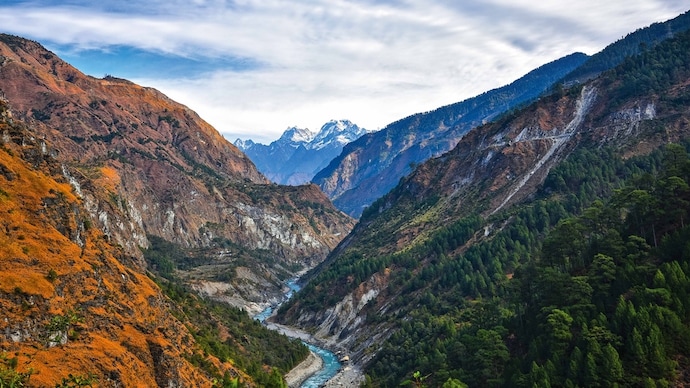A groundbreaking discovery with the potential to reshape our comprehension of the geological forces shaping the Earth’s towering mountain ranges has been unveiled by researchers. New seismic data, presented at the American Geophysical Union conference in San Francisco, indicates a surprising development beneath the Tibetan plateau—the splitting of the Indian tectonic plate into two distinct parts.
Traditionally, geologists attributed the majestic Himalayan mountain range’s formation to the collision between the Indian and Eurasian continental plates. This collision, resembling the crumpling of a car hood in a head-on collision, has been ongoing for approximately 60 million years. The process involves the Indian plate being driven beneath its northern counterpart by molten rock currents in the Earth’s mantle, resulting in the gradual uplift of the Eurasian landmass and the creation of the world’s highest elevations.
Contrary to earlier assumptions about the smooth subduction of the buoyant Indian plate, the recent seismic analysis challenges the established narrative. Instead of sinking uniformly into the mantle, the seismic data suggests a more intricate scenario—plate delamination.
In this newly proposed model, the dense base of the Indian plate peels away and descends into the mantle, while the lighter top portion continues to scrape just beneath the Eurasian plate. This revelation is the result of a comprehensive study led by geophysicist Lin Liu from the Ocean University of China. The research combines ‘up-and-down’ S-wave and shear-wave splitting data from 94 broadband seismic stations in southern Tibet with ‘back-and-forth’ P-wave data, providing a nuanced perspective on the subterranean dynamics in play.
The findings reveal that the Indian slab is not uniformly gliding along or crumpling. Instead, it is undergoing a significant structural separation, with some sections remaining relatively intact and others fragmenting approximately 100 kilometers below the surface. This process allows the base of the plate to deform into the Earth’s fiery core.
The seismic investigation aligns with geological models based on helium-3 enriched spring water and patterns of fractures and earthquakes near the surface. Collectively, these pieces of evidence paint a vivid picture of tectonic turmoil beneath the Himalayas.
The implications of this study extend beyond our understanding of mountain formation. They also have significant implications for earthquake prediction methods. A clearer three-dimensional image of how tectonic plates interact allows scientists to better comprehend the Earth’s surface evolution and potentially forecast seismic events with greater accuracy.
